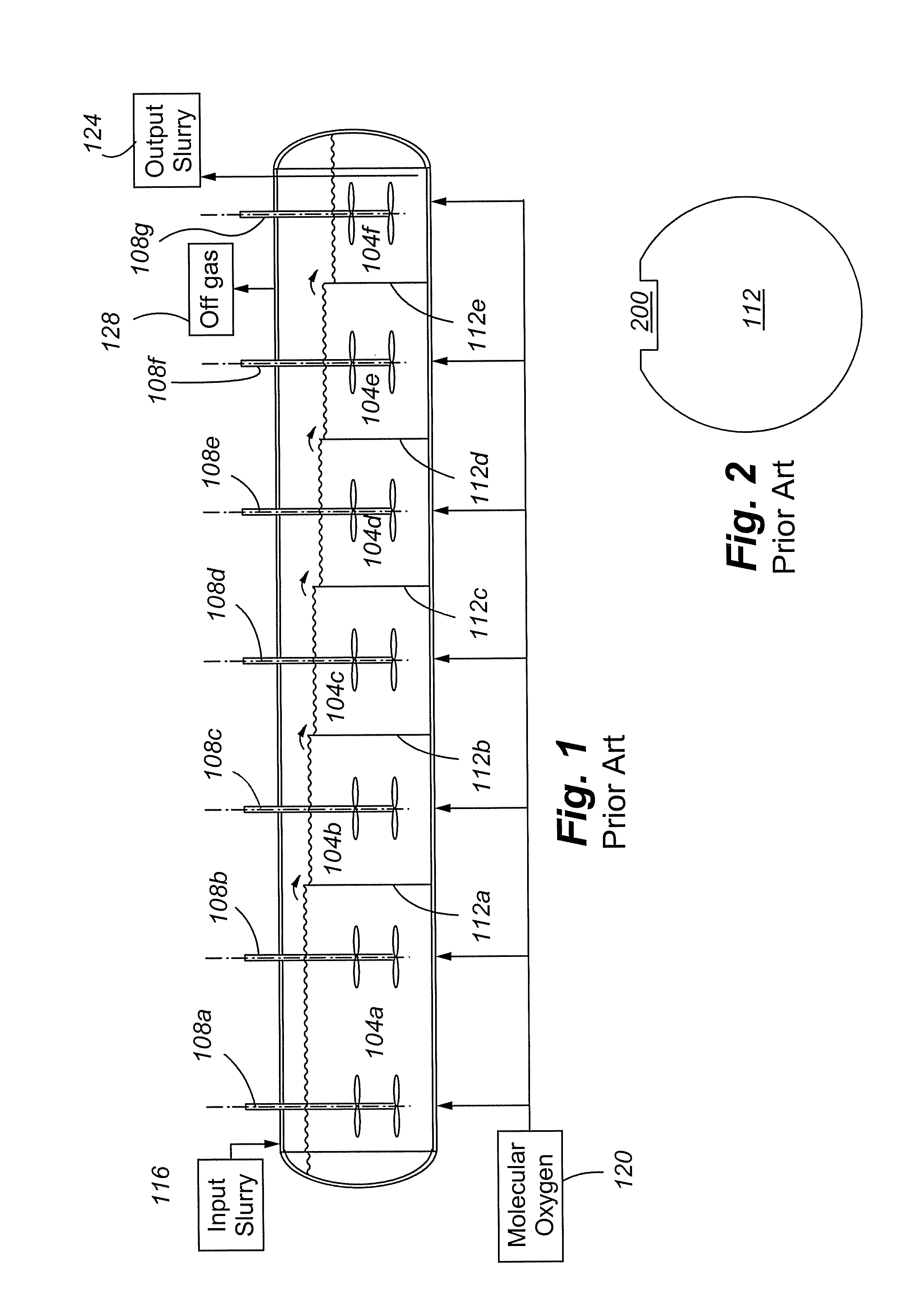Autoclave with underflow dividers
a technology of autoclave and divider, which is applied in the field of superatmospheric reactors and autoclaves, can solve the problems of substantial decrease in metal extraction levels, achieve the effects of promoting abrasion of the autoclave agitator blade and the autoclave lining, reducing short-circuiting levels, and reducing effective operating volum
- Summary
- Abstract
- Description
- Claims
- Application Information
AI Technical Summary
Benefits of technology
Problems solved by technology
Method used
Image
Examples
Embodiment Construction
[0038] An embodiment of the present invention will be discussed with reference to FIGS. 3-5. The autoclave 300 of a first embodiment of the present invention includes a plurality of compartments 304a-f separated by dividers 308a-e. Although the autoclave is shown as having only five compartments, it is to be understood that the autoclave can have more or fewer than five compartments, depending on the application. As can be seen by the arrows in FIG. 3, the dividers 308a-d are underflow dividers while the last divider 308f may be an overflow weir (such as the weir of FIG. 2). The use of an overflow divider between the last compartment and the next-to-last compartment can help provide a wider variation and greater sensitivity in liquid level in the last compartment, which will facilitate dynamic level control driving periods of fluctuating flow of the feed stream. The provision of an overflow divider in the last compartment is deemed less necessary as the member of autoclave compartme...
PUM
| Property | Measurement | Unit |
|---|---|---|
| partial pressure | aaaaa | aaaaa |
| operating temperature | aaaaa | aaaaa |
| outer diameter | aaaaa | aaaaa |
Abstract
Description
Claims
Application Information
 Login to View More
Login to View More - R&D
- Intellectual Property
- Life Sciences
- Materials
- Tech Scout
- Unparalleled Data Quality
- Higher Quality Content
- 60% Fewer Hallucinations
Browse by: Latest US Patents, China's latest patents, Technical Efficacy Thesaurus, Application Domain, Technology Topic, Popular Technical Reports.
© 2025 PatSnap. All rights reserved.Legal|Privacy policy|Modern Slavery Act Transparency Statement|Sitemap|About US| Contact US: help@patsnap.com



